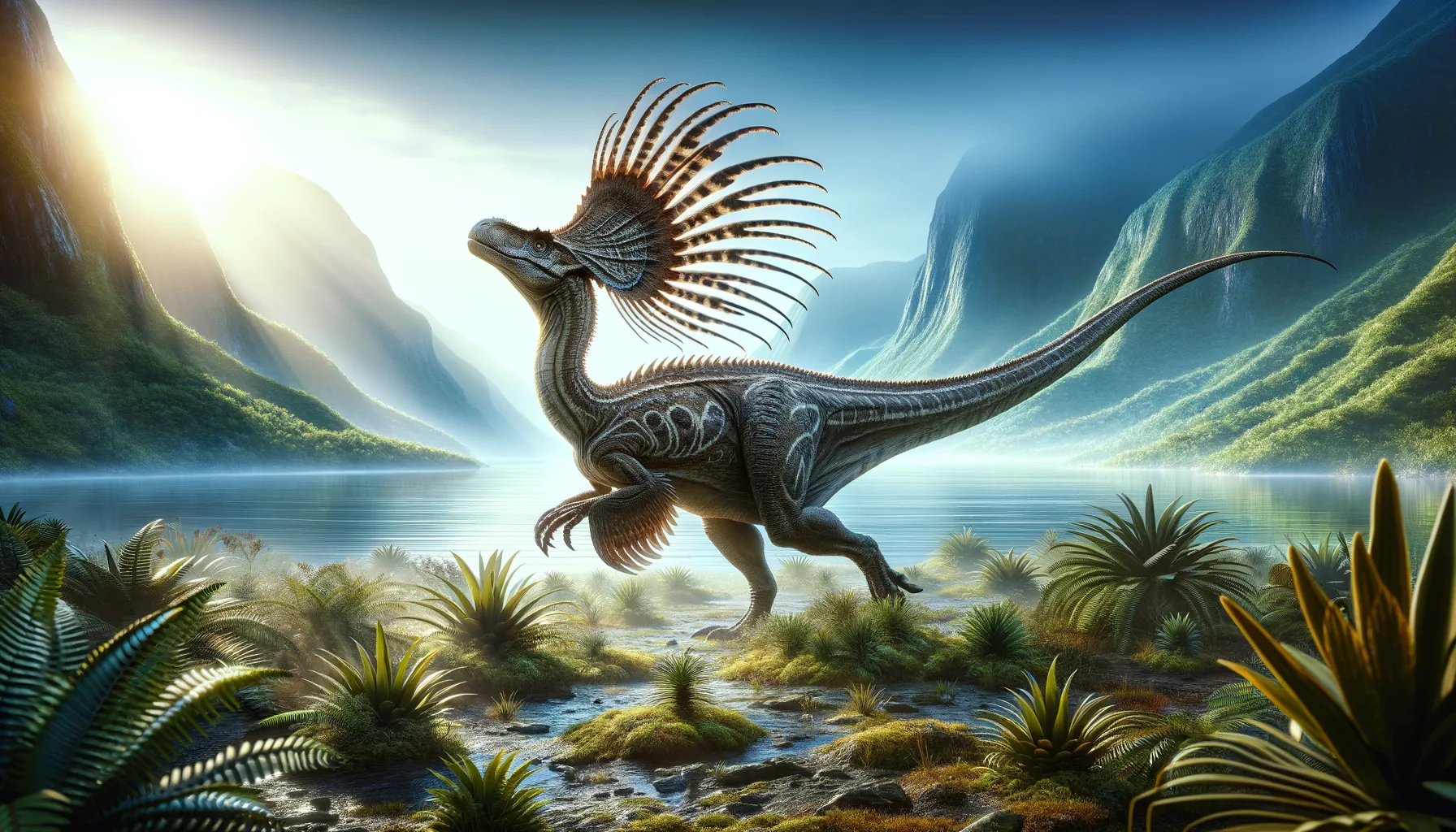
Guanlong
Swift predator with an impressive crest.
Period
Jurassic
Length
About 3 meters (10 feet) in length.
Height
Approximately 1 meter (3 feet) tall at the hip.
Weight
Around 25 kilograms (55 pounds).
Guanlong, known as 'crowned dragon', was a small, early tyrannosaur from the Late Jurassic period. It had a lightweight body built for speed and agility, which helped in hunting. Its most striking feature was its prominent head crest, likely used for display or recognition. Guanlong provides valuable insight into the evolution of larger, later tyrannosaurs like T. rex. Discovered in China, it lived in a time of rich biodiversity and complex ecosystems.
Diet
Guanlong was a carnivore, primarily feeding on small to medium-sized animals. It likely preyed on early mammal species, small dinosaurs, and other reptiles found in its environment.
Hunting
As a predator, Guanlong likely used its speed to ambush or pursue prey. Its agility and sharp teeth would have helped it catch and process its food, hinting at a dynamic hunting strategy.
Environmental challenges
During the Late Jurassic, environmental challenges included fluctuating climates and competition for resources. Adaptations were necessary for survival, such as developing efficient hunting techniques. Guanlong had to avoid larger predators while securing enough food in its diverse ecosystem.
Speed
Moderately swift, estimated at 30 km/h.
Lifespan
Lived for about 10 to 15 years.
First discovery
First discovered in China's Shishugou Formation in 2002.
Fun Facts
- Guanlong means 'crowned dragon' in Chinese, named for the crested head it had.
- It lived about 160 million years ago during the Late Jurassic period, making it one of the earliest known tyrannosaurs.
- Guanlong was relatively small compared to other tyrannosaurs, measuring around 10 feet in length.
- The fossils of Guanlong were discovered in the Junggar Basin in northwestern China.
- Guanlong had a distinctive crest on its head, which may have been used for display or species recognition.
- Unlike its giant relatives like Tyrannosaurus rex, Guanlong weighed only around 100 pounds.
- Guanlong is an important discovery because it helps scientists understand the early evolution of the tyrannosaur family.
Growth and Development
Guanlong, like many theropods, would have experienced rapid growth during its juvenile years. The development of its iconic head crest likely began early, playing a role in social and mating displays. Its growth spurt may have correlated with nutritional availability and environmental conditions.
Habitat
Guanlong inhabited a semi-arid to humid environment, rich in vegetation and water sources. The region included rivers and floodplains that supported a diverse range of species. These habitats provided both challenges and opportunities, influencing its lifestyle and diet.
Interaction with other species
Guanlong lived among various dinosaur species, contributing to a complex food web. It would have interacted with both prey and rival predators, maintaining a balance in its ecosystem. These interactions helped shape its behavioral and physical adaptations.
Natural lifespan
Guanlong likely had a natural lifespan of up to 15 years.
Reproduction
Guanlong reproduced by laying eggs, like other theropods. Nesting sites were chosen carefully to protect eggs from predators and environmental threats. Parental care is speculative but might have included guarding the nest.
Social behaviour
Guanlong may have exhibited pack or solitary hunting behaviors, a common debate among paleontologists. The social structure could have included mating displays featuring their crests. Social interactions might have played a role in territory establishment and resource access.
Fossil locations
Guanlong fossils were discovered in the Shishugou Formation of China. This area has yielded numerous well-preserved specimens, providing insights into Jurassic ecosystems. The discovery was significant in understanding early tyrannosaurid evolution.
